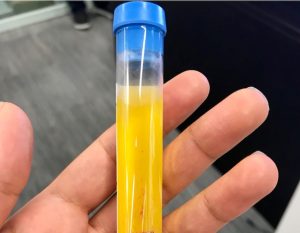Introducing…PRP
Dr Sabba
6th December 2017
WHY?
Having beautiful, radiant skin is a universal marker of beauty. Anti-wrinkle injections may remove fine lines and wrinkles but if the underlying skin is of poor quality and texture this is not necessarily giving clients the best result. I actually think that having a few wrinkles on skin that is glowy, radiant and of a good texture is far better than continuing to have anti-wrinkle injections so that there are no wrinkles but have skin that is sun-damaged, thin and sagging.
Having beautiful skin at all ages is something that a lot of clients desire and so I wished to introduce a treatment that directly targeted the skin itself to improve skin quality and texture.
PRP which stands for Platelet Rich Plasma, is a treatment modality that works both on its own and also compliments the treatments I currently provide really nicely. It has been used in the NHS in other specialities such as orthopaedics, sports medicine and ophthalmology for a long time in treating wounds and it uses have now been transferred to facial aesthetics due to its regenerative properties.
HOW?
The procedure involves giving a small blood sample which is then placed in a centrifuge and the platelets are separated out. It is the platelets in blood that stimulate collagen, elastin and cellular growth. The PRP that is injected should be a golden colour and the best PRP does not contain any red blood cells. Red blood cells should not be injected as they do not contain growth factors. Once the sample is obtained it is injected using an extremely small needle into the skin.


WHEN?
- In the build up to a special event such as a wedding
- If you want your skin to have that extra glow or radiance
- To improve fine lines and thinning skin
- If you do not need or want to have dermal filler
- Skin with hyperpigmentation
- To treat wrinkles around the eyes
- To improve scarring
- To promote hair growth (scalp injections)
Is this safe?
It is generally considered a very safe procedure. This is because a sample of your own blood is used so there is no risk of an allergic response.
What is the difference between PRP and dermal fillers?
Dermal fillers contain a substance (hyaluronic acid) that is injected into your skin to give volume. PRP is self-sourced and actively helps your skin to repair itself.
How many treatments will I need?
In many cases PRP is performed in a series of three sessions, 3-8 weeks apart. Often people start to see results at 2-4 weeks. Maintenance treatments are recommended every 6-12 months for optimal long-lasting results.
What are the side-effects?
The skin can be red for a few days after the procedure and you may be able to feel small lumps where the PRP has been injected but this does not usually last long.
Post procedure care
Topical Vitamin C is a powerful antioxidant and should be part of your normal skin care routine. This should be maintained for at least 3 months after your PRP treatment. Full information is provided at the consultation.
For further information or to book a consultation please call 020 36334908, email info@drsabba.co.uk or DM@drsabba





